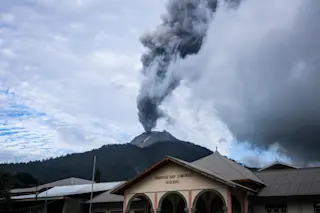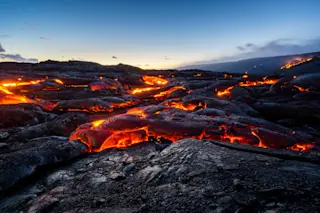Fountains of lava erupted from the Sundhnúkur volcanic system in southwest Iceland on Jan. 14, 2024. As the world watched on webcams and social media, lava flows cut off roads and bubbled from a new fissure that invaded the outskirts of the coastal town of Grindavík, burning down at least three houses in their path.
Nearby, construction vehicles that had been working for weeks to build large earthen dams and berms in an attempt to divert the lava’s flow had to pull back.
The lava flow on Jan. 14, 2024, with Grindavík in the foreground. Iceland Department of Civil Protection
Humans have tried many ways to stop lava in the past, from attempting to freeze it in place by cooling it with sea water, to using explosives to disrupt its supply, to building earthen barriers.
It’s too soon to say if Iceland’s earthworks will succeed in saving Grindavík, a town ...














